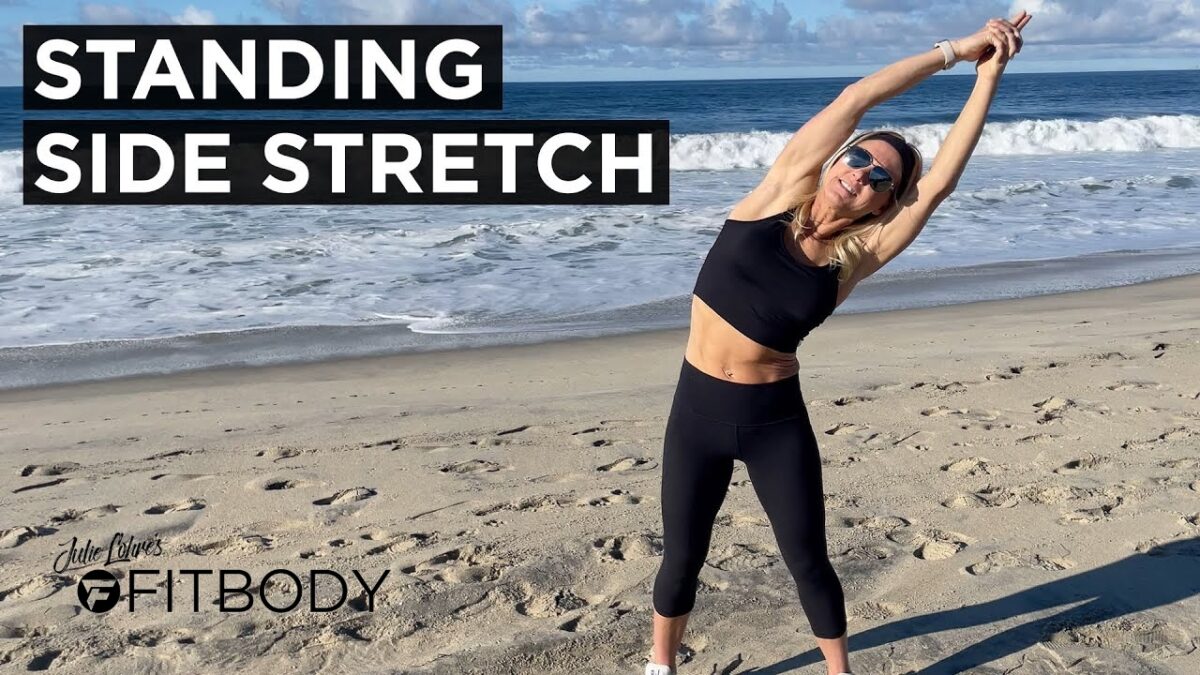Standing Side Bend Stretch
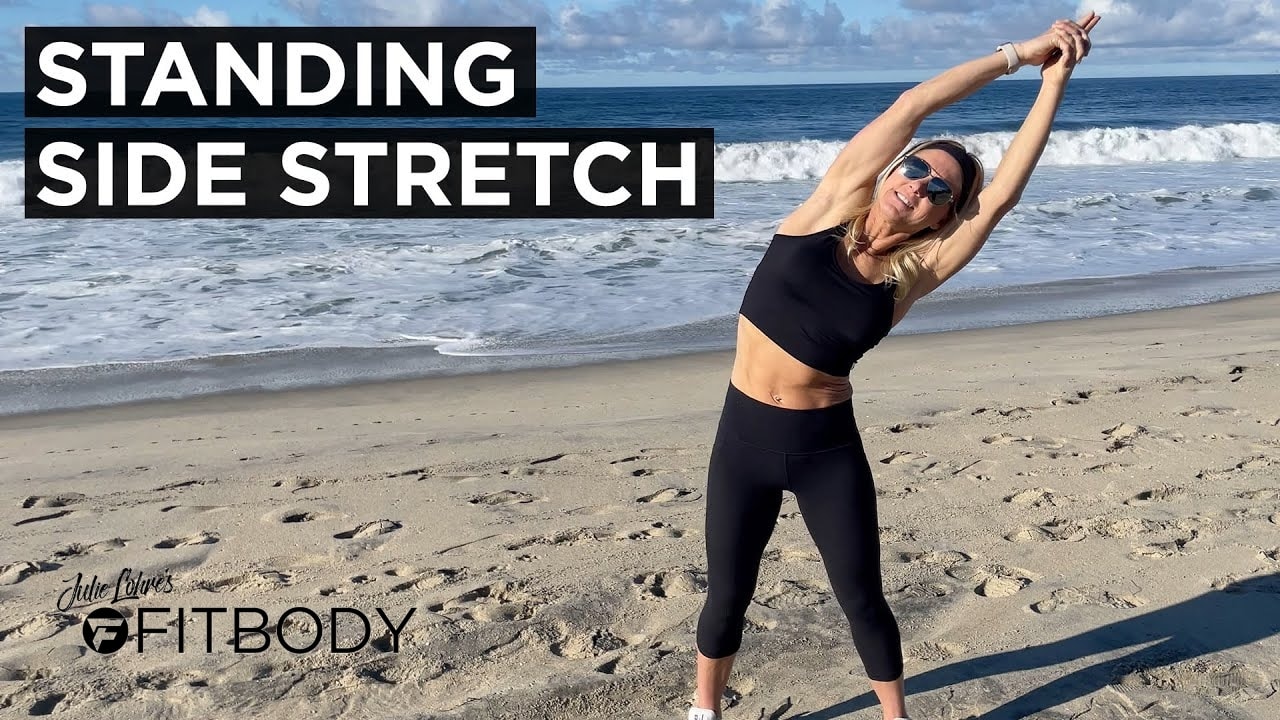
One of my favorite stretches is a standing side bend which is also called a standing side stretch or overhead side stretch. This simple, full body stretch is common at the beginning of yoga classes for a very good reason. It is one of the few stretches that target the side body, particularly throughout the torso, which is super helpful before challenging upper body workouts. Balancing the upper body with a standing side bend can allow the muscles along your side to lengthen and stretch while you focus your mind in a meaningful way. This is an excellent way to prepare for the work ahead in the gym or on the mat since that mind-muscle connection is so important for fitness gains. Standing side bends help gently activate the muscles along one side of the body as your feet and lower body remain still.
How to do Standing Side Bend or Standing Side Stretch:
Begin by standing with your feet positioned hip-width apart, creating a stable foundation for the exercise. Allow your arms to hang naturally at your sides, embodying a relaxed and neutral starting posture.
Gradually lift both your arms upwards in a fluid motion, extending them directly overhead while ensuring that your elbows remain fully extended and your arms are straight. Tuck your hips under slightly and engage your core muscles. Feel a gentle lengthening and elongation throughout your body.
Inhale deeply, drawing in a breath that fills your lungs and lifts your chest. As you exhale, lean gently to the right side, feeling a stretch all along your side body. Feel the standing side stretch gently embrace your entire right side. Allow the gentle pull and lengthening sensation to spread from your right hand, down your arm, side, and through your waist, releasing any accumulated tension or tightness.
Take a moment to fully appreciate the stretch and its effects on your body. Breathe deeply, inhaling serenity and exhaling any residual stress or strain. Hold the standing side bend for a few nourishing breaths, allowing your body to adapt and settle into the side bend itself.
Using your oblique abdominal muscles, lift your shoulders, head, and arms back up to the starting position with both arms still extended overhead. Feel the subtle shift as your body re-establishes its equilibrium, embracing a renewed sense of centeredness. Repeat the standing side stretch on the left side.
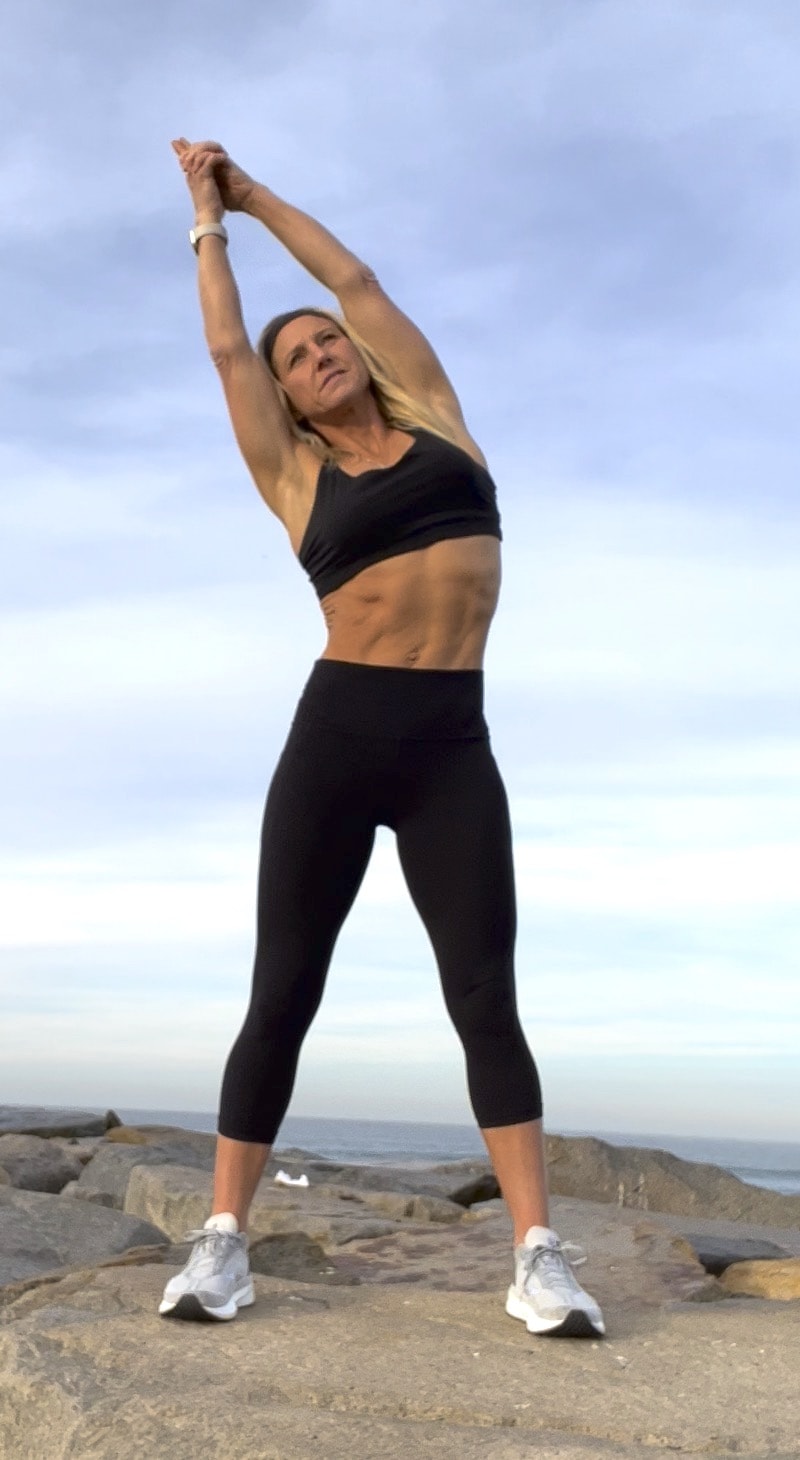
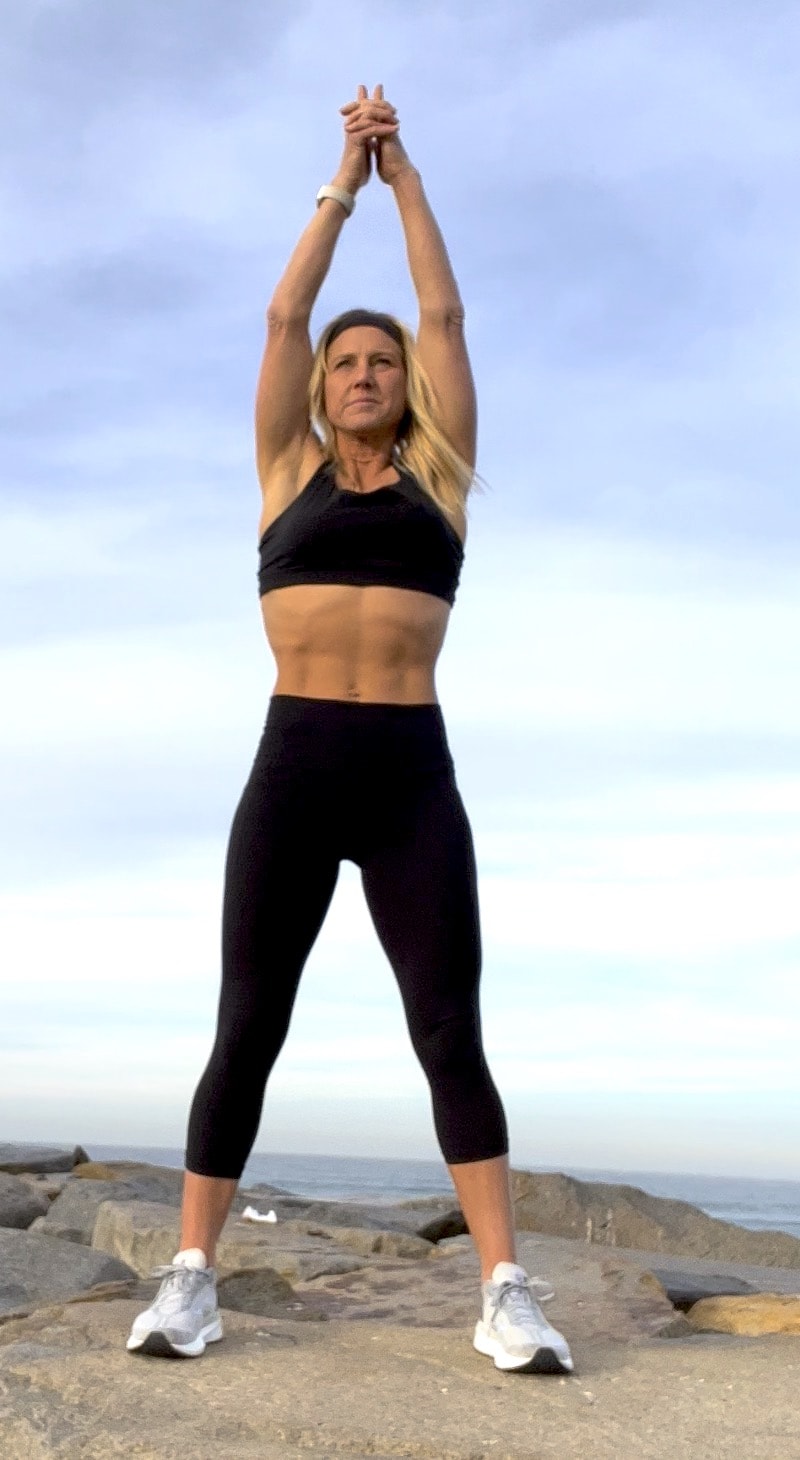
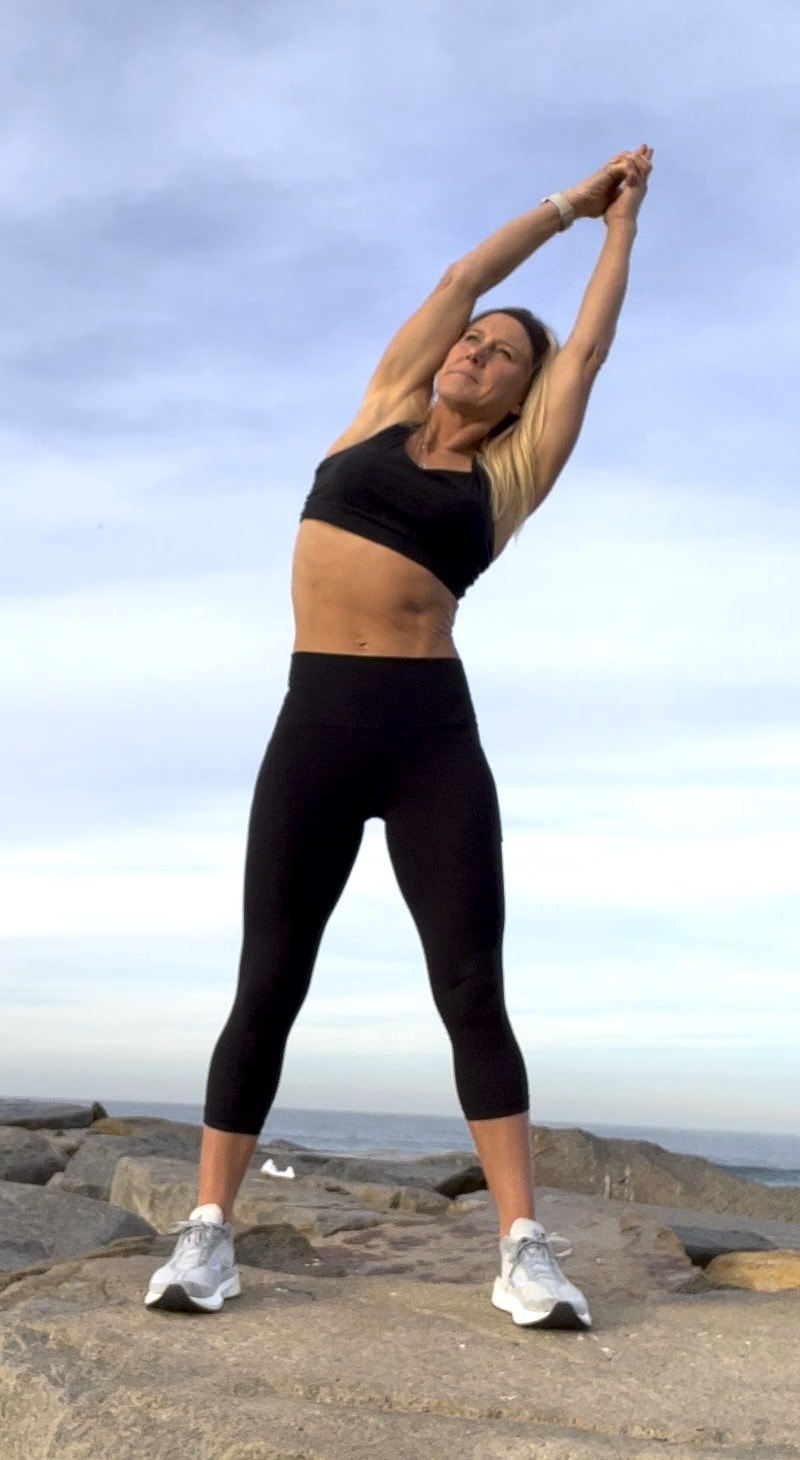
Common Mistakes with the Standing Side Bend:
Avoid twisting your neck and maintain a forward gaze while allowing your shoulders to relax away from your ears.
Remember to keep your shoulders relaxed and avoid hunching them up toward your ears. Also, avoid leaning forward or backward as you bend to the side. The movement should be isolated to the side of your torso.
What Muscles do Side Bends Work?
Standing side bends primarily target the muscles of the lateral (side) core also known as the side body and the muscles of the lower back. These include:
- External obliques: These are the side body muscles on the sides of the waist, located beneath the love handles. The external obliques help to rotate and flex the trunk.
- Internal obliques: These are deeper muscles located beneath the external obliques, and they also help to rotate and flex the trunk.
- Erector spinae: These are the muscles that run parallel to the spine and help to extend the back and maintain upright posture.
- Quadratus lumborum: This muscle is located deep in the lower back and helps to stabilize the pelvis and spine.
- Latissimus dorsi: These are the large muscles that extend from the back of the shoulders down to the lower back, and they help to adduct, extend, and internally rotate the arm.
By performing standing side bends, you can stretch and strengthen these side body muscles, which can help to improve your overall core strength and stability, enhance your posture, and reduce your risk of lower back pain and injury.
What are the benefits of overhead standing side bends?
Standing side bends offer a range of benefits for the body and mind. Primarily, they provide a deep stretch and lengthening sensation along the sides of the torso, promoting increased flexibility and improved range of motion.
By engaging the muscles in the obliques, back, and hips, standing side bends help to strengthen and tone these areas, enhancing core stability and posture.
Additionally, the controlled breathing and mindful movement involved in standing side bends can induce a sense of calm and relaxation, reducing stress and promoting mental clarity. Incorporating side bends into your routine can contribute to a more balanced physique, increased body awareness, and an overall sense of well-being.

